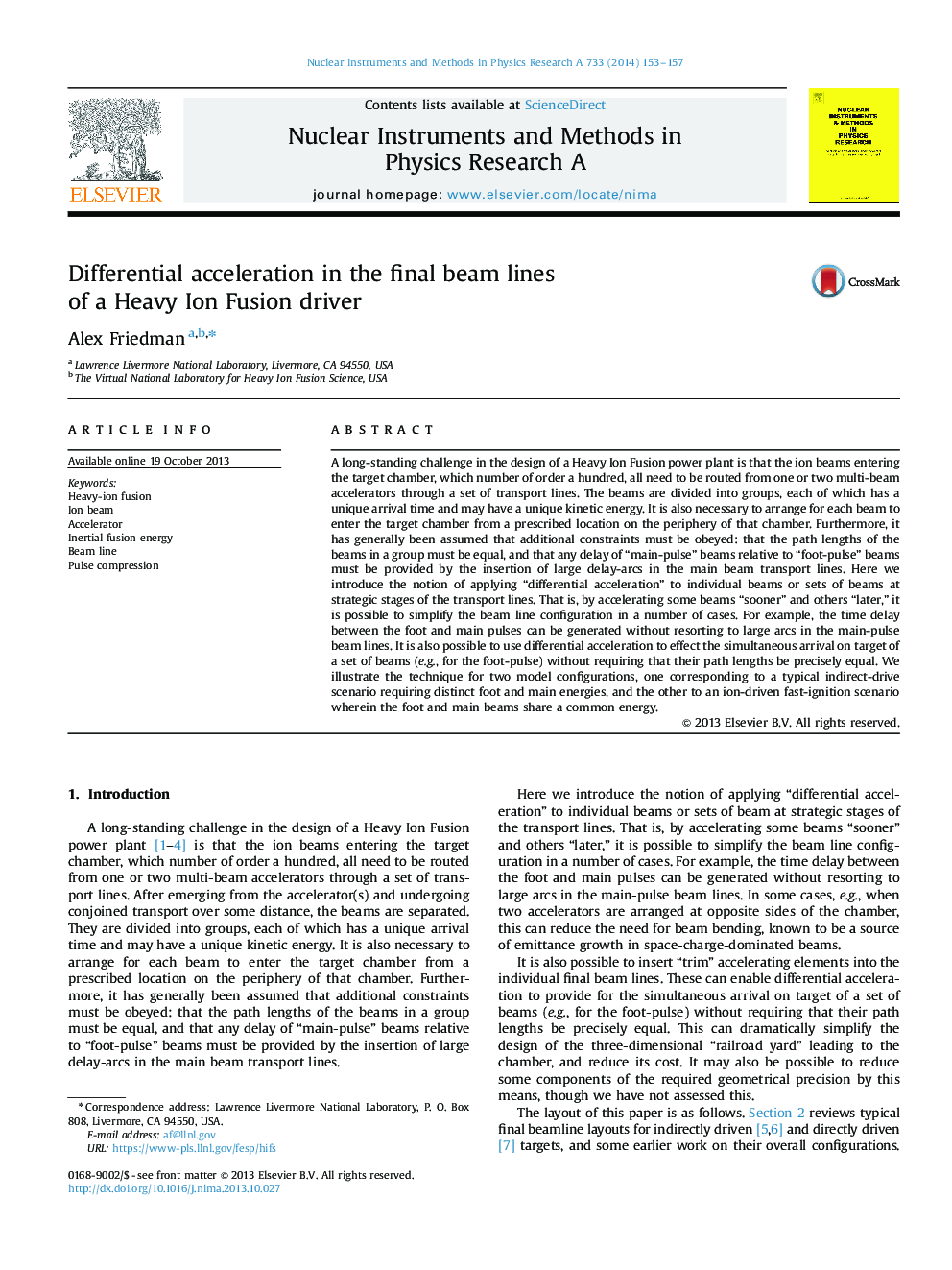| کد مقاله | کد نشریه | سال انتشار | مقاله انگلیسی | نسخه تمام متن |
|---|---|---|---|---|
| 1822706 | 1526392 | 2014 | 5 صفحه PDF | دانلود رایگان |
A long-standing challenge in the design of a Heavy Ion Fusion power plant is that the ion beams entering the target chamber, which number of order a hundred, all need to be routed from one or two multi-beam accelerators through a set of transport lines. The beams are divided into groups, each of which has a unique arrival time and may have a unique kinetic energy. It is also necessary to arrange for each beam to enter the target chamber from a prescribed location on the periphery of that chamber. Furthermore, it has generally been assumed that additional constraints must be obeyed: that the path lengths of the beams in a group must be equal, and that any delay of “main-pulse” beams relative to “foot-pulse” beams must be provided by the insertion of large delay-arcs in the main beam transport lines. Here we introduce the notion of applying “differential acceleration” to individual beams or sets of beams at strategic stages of the transport lines. That is, by accelerating some beams “sooner” and others “later,” it is possible to simplify the beam line configuration in a number of cases. For example, the time delay between the foot and main pulses can be generated without resorting to large arcs in the main-pulse beam lines. It is also possible to use differential acceleration to effect the simultaneous arrival on target of a set of beams (e.g., for the foot-pulse) without requiring that their path lengths be precisely equal. We illustrate the technique for two model configurations, one corresponding to a typical indirect-drive scenario requiring distinct foot and main energies, and the other to an ion-driven fast-ignition scenario wherein the foot and main beams share a common energy.
Journal: Nuclear Instruments and Methods in Physics Research Section A: Accelerators, Spectrometers, Detectors and Associated Equipment - Volume 733, 1 January 2014, Pages 153–157
